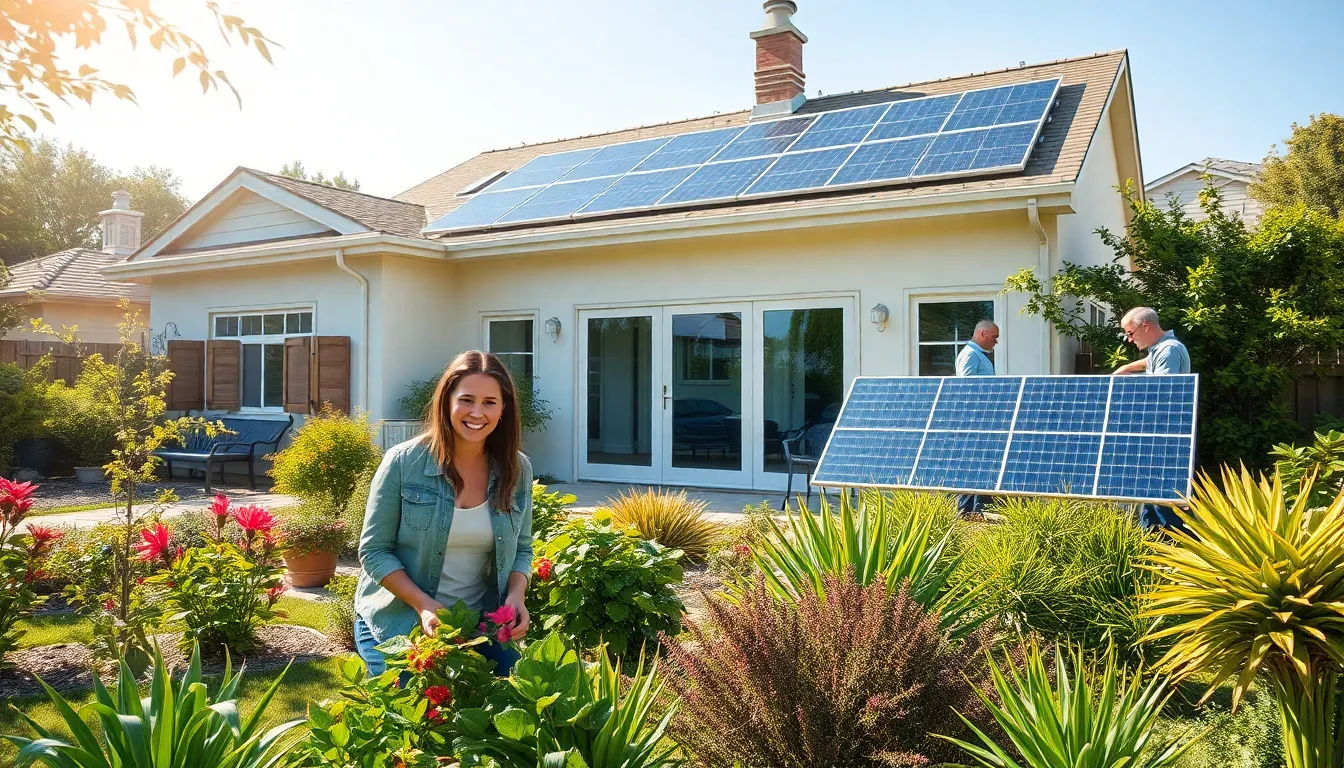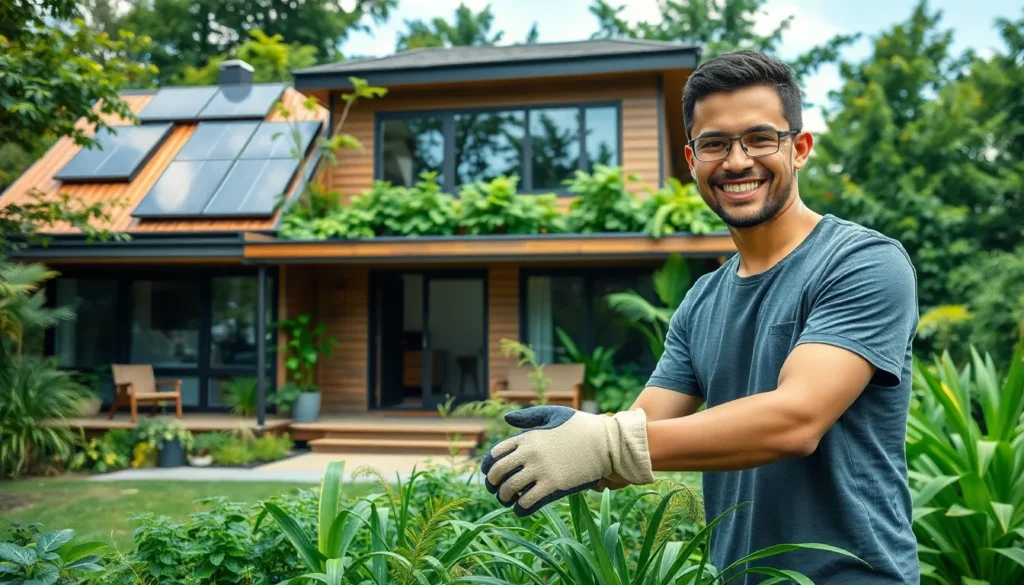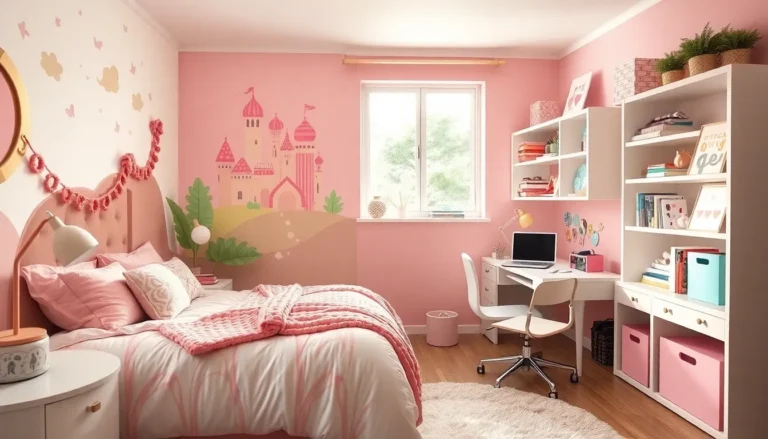In a world increasingly aware of environmental issues, creating an eco-friendly home has never been more important. People are seeking sustainable living solutions that not only reduce their carbon footprint but also enhance their quality of life. From energy-efficient appliances to sustainable materials, the options for greening a home are both diverse and accessible.
Transforming a living space into an eco-friendly haven isn’t just about making a statement; it’s about fostering a healthier environment for families and future generations. With simple changes, anyone can contribute to a more sustainable lifestyle while enjoying the benefits of reduced energy costs and improved indoor air quality. Embracing eco-friendly practices is not just a trend; it’s a vital step towards a more sustainable future.
Table of Contents
ToggleWhat Is An Eco-Friendly Home?
An eco-friendly home features design and construction practices that prioritize environmental health. Eco-friendly homes incorporate materials, technologies, and practices that minimize the carbon footprint while maximizing energy efficiency.
- Sustainable Materials: Eco-friendly homes use renewable resources, like bamboo or recycled steel, to reduce environmental impact.
- Energy Efficiency: These homes include energy-efficient appliances, LED lighting, and improved insulation, resulting in lower energy consumption.
- Water Conservation: Rainwater harvesting systems and low-flow fixtures help conserve water, reducing utility costs and environmental strain.
- Indoor Air Quality: Eco-friendly homes maintain better indoor air quality through the use of non-toxic paints, finishes, and ventilation systems.
- Renewable Energy Sources: Solar panels and wind turbines allow these homes to harness energy from natural sources, further decreasing reliance on fossil fuels.
By integrating these elements, eco-friendly homes promote sustainability, enhance livability, and contribute positively to the environment.
Benefits Of An Eco-Friendly Home

Eco-friendly homes offer numerous advantages that enhance both individual lifestyles and the broader environment. These benefits include sustainable living practices and significant cost savings.
Sustainable Living
Sustainable living embodies a lifestyle that minimizes negative environmental impacts. Eco-friendly homes promote reduced resource consumption through features such as energy-efficient appliances, solar panels, and rainwater harvesting systems. They help decrease greenhouse gas emissions and reliance on non-renewable resources. By utilizing sustainable materials like reclaimed wood or bamboo, these homes support a circular economy and preserve natural habitats. Overall, eco-friendly homes foster a healthier lifestyle, encouraging occupants to connect with nature and prioritize well-being.
Cost Savings
Cost savings represent a key benefit of eco-friendly homes, achieved through energy efficiency and reduced utility bills. Homes equipped with solar panels can significantly lower electricity costs, while energy-efficient appliances consume less power, resulting in ongoing savings. Water conservation systems, such as low-flow fixtures and greywater recycling, reduce water bills. Additionally, many eco-friendly features qualify homeowners for tax incentives or rebates, further enhancing financial benefits. Over time, these savings accumulate, providing a compelling reason to embrace eco-friendly living.
Design Elements Of An Eco-Friendly Home
Eco-friendly homes incorporate specific design elements that enhance sustainability and minimize environmental impact. Key components include energy efficiency and the use of sustainable materials.
Energy Efficiency
Energy-efficient designs minimize energy consumption and reduce utility costs. Effective strategies include:
- Insulation: High-quality insulation prevents heat loss in winter and heat gain in summer, enhancing comfort while minimizing energy use.
- Windows: Double or triple-glazed windows improve thermal performance and reduce energy bills.
- Appliances: ENERGY STAR® certified appliances consume less energy than standard models, offering significant long-term savings.
- Lighting: LED lighting uses up to 80% less energy than traditional bulbs and has a longer lifespan.
- Heating and Cooling Systems: High-efficiency HVAC systems maintain optimal temperature at reduced energy expenditure.
Integrating these elements creates a home that operates efficiently, contributing to lower carbon emissions.
Sustainable Materials
Sustainable materials are crucial in eco-friendly home design. Key materials include:
- Bamboo: Fast-growing and renewable, bamboo serves as an excellent flooring and cabinetry option.
- Recycled Steel: Used in framing and roofing, recycled steel has a lower environmental impact compared to new materials.
- Reclaimed Wood: Salvaged wood reduces waste and provides unique aesthetics and durability.
- Low-VOC Paints: Low volatile organic compound paints improve indoor air quality by reducing harmful emissions.
- Natural Stone: Durable and locally sourced, natural stone minimizes transportation impacts and offers long-lasting beauty.
Using these materials enhances sustainability, lowers resource consumption, and promotes healthier living spaces.
Tips For Creating An Eco-Friendly Home
Creating an eco-friendly home involves implementing practical strategies that enhance sustainability. Adopting these methods can significantly reduce environmental impact while promoting a healthier living environment.
Eco-Friendly Upgrades
- Install Energy-Efficient Appliances: Choose appliances labeled with the ENERGY STAR® certification, which indicates high efficiency and lower energy consumption.
- Implement Smart Home Technology: Use smart thermostats and energy monitors to optimize energy usage, providing real-time feedback on energy consumption patterns.
- Upgrade Insulation: Enhance insulation materials, such as spray foam or cellulose, to minimize energy loss and improve overall energy efficiency.
- Switch to LED Lighting: Replace incandescent bulbs with LED alternatives, which consume up to 75% less energy and last significantly longer.
- Consider Solar Panels: Invest in solar panels to harness renewable energy, reducing reliance on fossil fuels and lowering electricity costs.
Landscaping Choices
- Use Native Plants: Select native plants that require less water and maintenance, promoting biodiversity and reducing irrigation needs.
- Incorporate Xeriscaping: Design landscapes that conserve water through drought-resistant plants and mulch to retain moisture in the soil.
- Implement Rain Gardens: Create rain gardens to manage stormwater runoff, which also supports local wildlife and improves water quality.
- Opt for Permeable Paving: Choose permeable materials for driveways and walkways to allow water to infiltrate into the ground, reducing erosion and promoting groundwater recharge.
- Install Compost Bins: Set up compost bins in the yard to recycle organic waste, which provides nutrient-rich soil for gardening and reduces landfill contributions.
Embracing eco-friendly practices in home design isn’t just a trend; it’s a vital step towards a sustainable future. By incorporating energy-efficient appliances and sustainable materials, homeowners can create healthier living spaces that benefit both the environment and their wallets.
The shift towards eco-friendly homes fosters a deeper connection with nature while significantly reducing utility costs. As more individuals commit to sustainable living, the collective impact can lead to a healthier planet for generations to come.
Making conscious choices today paves the way for a brighter tomorrow, showcasing that eco-friendly living is not only achievable but essential.



